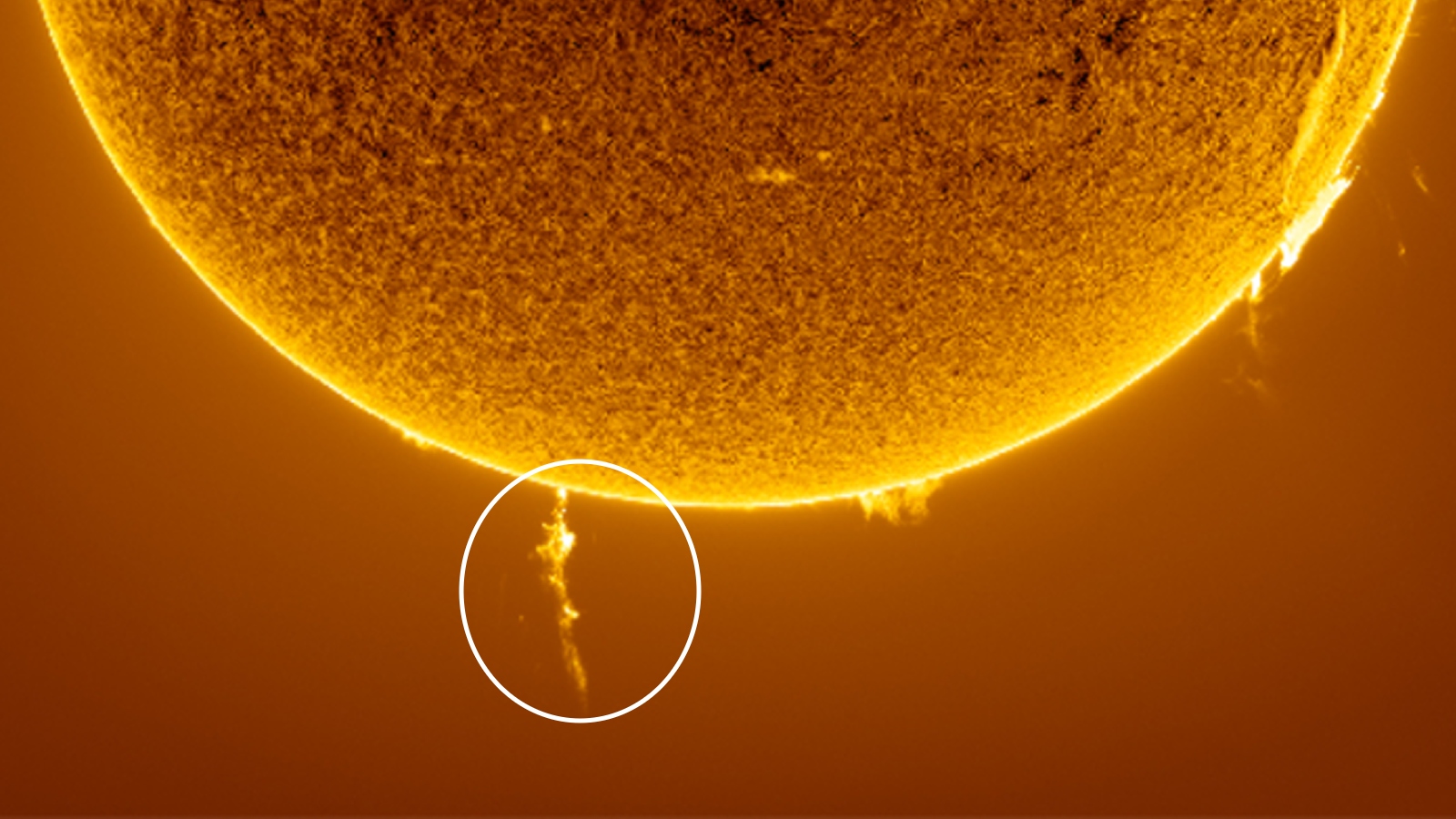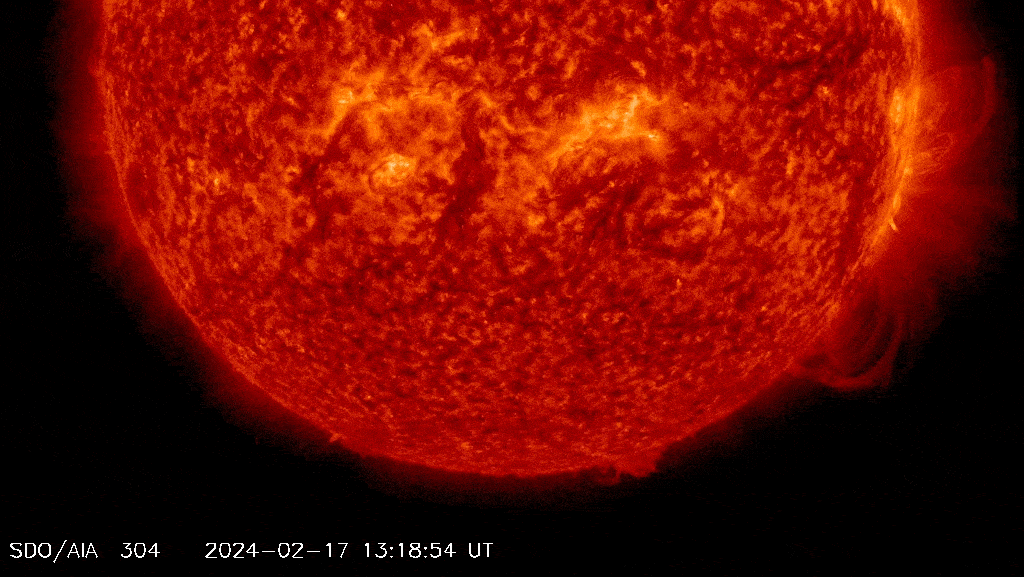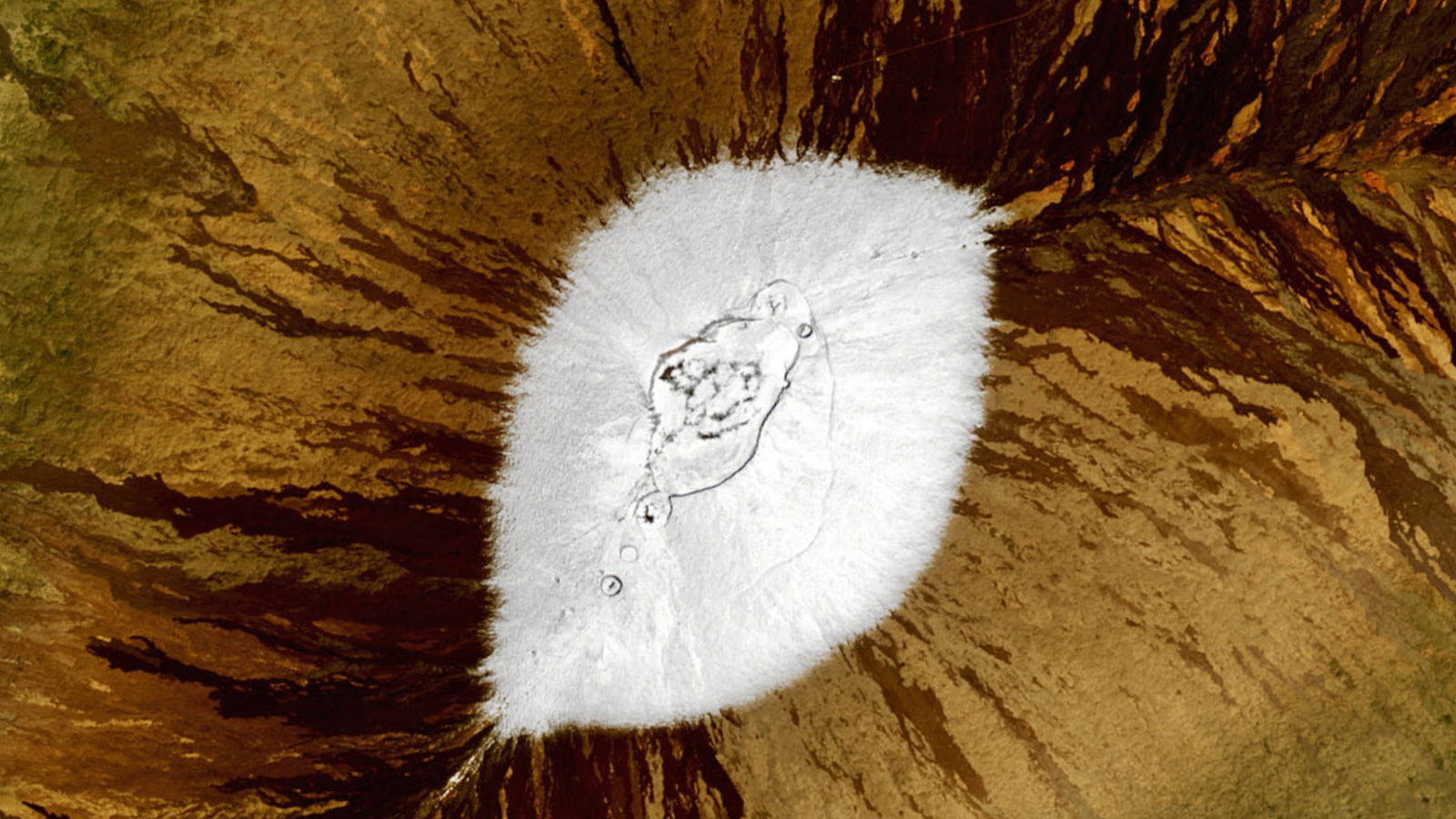'A wonderful spectacle': Photographer snaps rare solar eruption as 'magnetic noose' strangles the sun's south pole
A recent solar flare unleashed a massive plasma plume from the sun's south pole, where these stellar eruptions rarely happen. The unusual phenomenon is a sign of the impending solar maximum.

A gigantic plume of plasma recently exploded from the sun's south pole, where solar eruptions almost never occur. The explosion, which a photographer captured in stunning detail, is another telltale sign that the sun is about to enter its most active phase — the solar maximum.
The rare phenomenon occurred on Feb. 17, when a solar flare exploded from a sunspot near the sun's south pole, releasing a gigantic column of ionized gas, or plasma, that towered around 124,300 miles (200,000 kilometers) above the solar surface — around 15 times taller than Earth, Spaceweather.com reported. The plasma eventually snapped away from the sun and hurtled into space as a gigantic cloud, known as a coronal mass ejection (CME).
Astrophotographer Eduardo Schaberger Poupeau captured a highly detailed composite image of the plume before it broke away from the solar surface. "The plasma column was so large, I had to rotate the camera to fit it into the frame," Poupeau told Spaceweather.com. "It was truly a wonderful spectacle."
This stellar blast was extremely unusual because it erupted from the sun's south pole: Most solar flares erupt from sunspots on or around the sun's equator and almost never from near the magnetic poles, because the poles are where the sun's magnetic field is strongest, which normally suppresses sunspot formation.
Due to the orientation of the flare, the CME was directed away from Earth and the rest of the planets, which all orbit the sun on the same plane.
Related: 15 signs the sun is gearing up for its explosive peak — the solar maximum

The unusual eruption was likely triggered by what scientists call a polar crown filament (PCF) — a loop of magnetism that circles the sun's magnetic poles, according to Spaceweather.com. The plasma plume that was spat out by the flare is known as a polar crown prominence (PCP).
Sign up for the Live Science daily newsletter now
Get the world’s most fascinating discoveries delivered straight to your inbox.
PCPs become more common during the solar maximum — the most active phase of the sun's roughly 11-year solar cycle. During this phase, PCFs shrink in size, "like a tightening noose around their respective poles," Spaceweather.com reported. As these magnetic crowns constrict, they "strangle" the nearby magnetic fields, making them more likely to explode.
Experts believe the solar maximum will arrive at some point in the next few months — earlier than originally predicted.
As we approach solar maximum, more and more weird phenomena are occurring at the sun's poles: In February 2023, a PCP broke off from the sun and got caught in a PCF, creating a swirling plasma vortex that raged around the sun's north pole for eight hours. And in March last year, a PCP collapsed in on itself, creating a gigantic plasma waterfall near the sun's south pole, which was shortly followed by an enormous plume of rotating plasma, known as a "solar tornado," near the solar north pole that lasted for three days.

Harry is a U.K.-based senior staff writer at Live Science. He studied marine biology at the University of Exeter before training to become a journalist. He covers a wide range of topics including space exploration, planetary science, space weather, climate change, animal behavior and paleontology. His recent work on the solar maximum won "best space submission" at the 2024 Aerospace Media Awards and was shortlisted in the "top scoop" category at the NCTJ Awards for Excellence in 2023. He also writes Live Science's weekly Earth from space series.










